Australians strongly prefer coffee, whether it’s a traditional espresso or a creamy cappuccino.
They are among the top 30 countries in the world in terms of coffee consumption, with an average of 14 cups per week.
This article provides exciting market statistics on coffee consumption in Australia.
10 Coffee Facts & Stats to Kickstart Your Day
Here are some statistics related to coffee consumption in Australia:
- In 2021, the average coffee consumption per person was 2.1 kg
- In Australia, 75% of people use coffee daily.
- 27% of Australians feel they need coffee to get through the day.
- 78% of Australians consider taste and quality important when drinking coffee.
- During the COVID-19 pandemic, coffee consumption at home increased by 37%.
- Coffee prices could rise to $7 by the end of this year.
- In Australia, the coffee sector produced $7.7 billion in revenue in 2021.
- In Australia, just 600t of coffee is produced.
- People aged 25-34 consume the most coffee in Australia.
- Reusable cups at coffee shops increased by 292% in 2019.
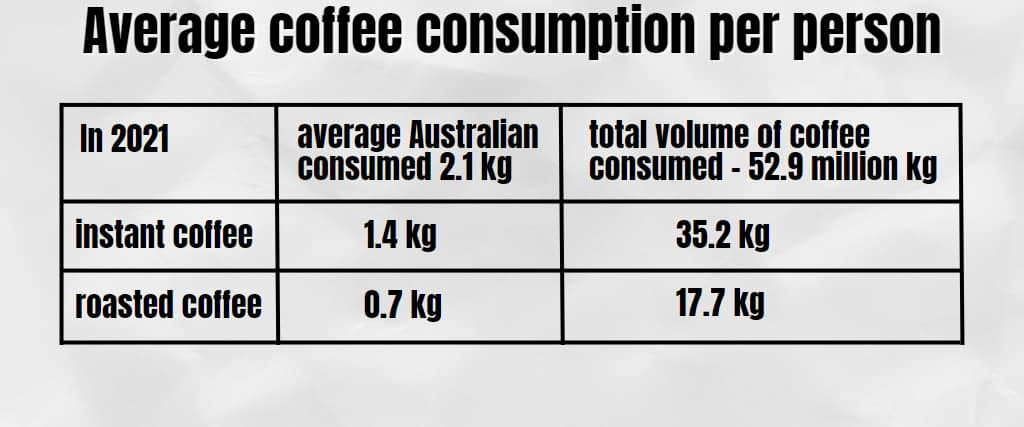
1. Average coffee consumption per person
In 2021, the average Australian consumed 2.1 kg of coffee, with instant coffee being more popular (1.4 kg) than roasted coffee (0.7 kg). The total volume of coffee consumed in the country in 2021 was 52.9 million kg, of which 35.2 kg was instant and 17.7 kg was roasted coffee.
2. Majority of Australians drink coffee
Around 75% of Australian adults drink at least a cup of coffee daily, with 28% of them consuming at least three cups daily. In comparison, only 9.8 people in Australia drink tea at least once a week, while 6.8 million drink beer.
3. 27% Of Aussies Require Coffee To Go Through The Day
27% of Australians claim they cannot go through the day without drinking coffee. This percentage is higher among millennials and Generation Xers (33% and 30%, respectively) than among older age groups (Builders generation).
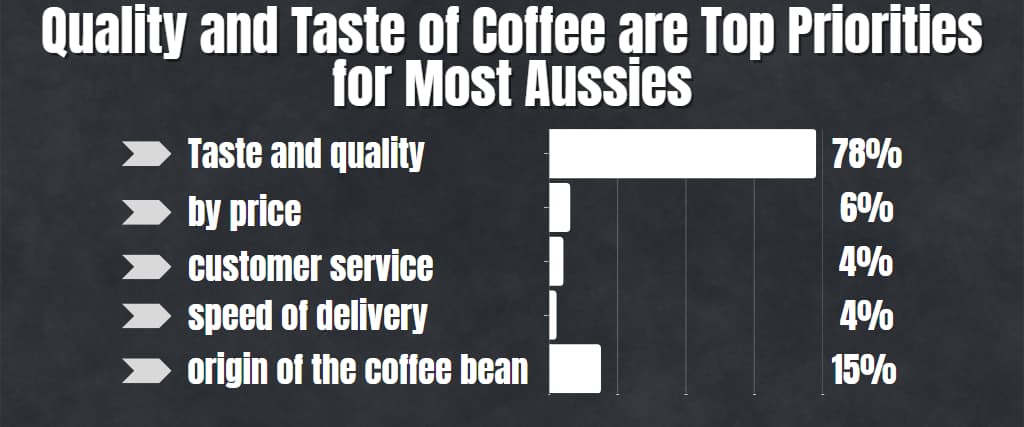
4. Quality and Taste of Coffee are Top Priorities for Most Aussies
Taste and quality are the top priorities for Australians when it comes to coffee (78%), followed by price (6%), customer service (4%), and speed of delivery (2%). When it comes to factors that would make them pay more for a cup of coffee, the origin of the coffee bean is the most important (15%), followed by customer service, the coffee roaster’s brand, and location.
Other interesting findings from a survey of 1,000 coffee consumers in Australia include the following:
- 26% of respondents would not return to a cafe if they served low-quality coffee.
- 39% of people are willing to wait 2-4 minutes for their takeaway coffee, while only 18% would wait more than 6 minutes.
- Customers in regional areas value customer service more (6%) than those in metro cities (3%).
5. 64% Of Customers Said They Would Return to a Cafe for Their Loyalty Program
A loyalty program can be a critical factor in customer retention, as 64% of cafe customers surveyed said they would return for one. 41% of respondents prefer a reward system where they receive a free coffee after purchasing a certain number of cups, similar to VIP or discount programs. Meanwhile, 30% would instead earn loyalty points they can redeem later.
6. 67% Of Coffees Are Paid for by Credit Card
Even though coffee is typically less than $5, cashless payment methods for coffee purchases have become increasingly popular in Australia, with 67% of coffee sales paid for with credit cards in 2019. This means that only 33% of coffee purchases were made with cash.
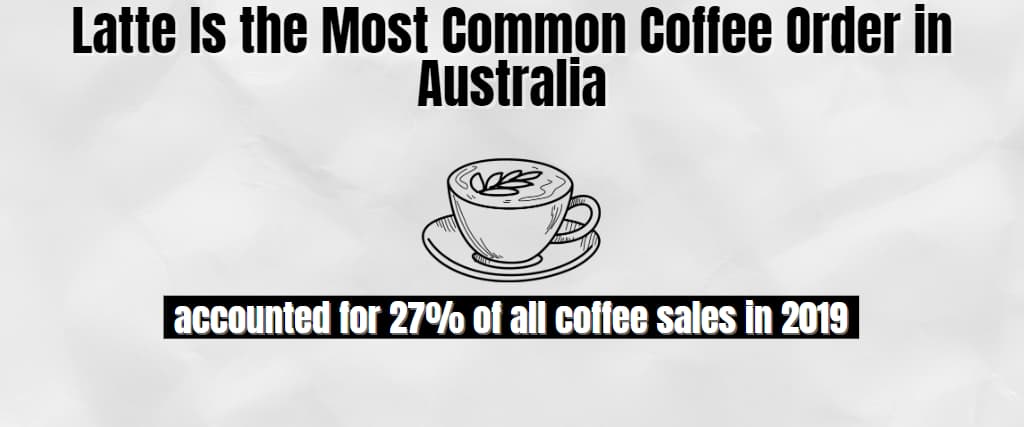
7. Latte Is the Most Common Coffee Order in Australia
According to research conducted by Square, the most common coffee order in Australia is the latte, which accounted for 27% of all coffee sales in 2019. The flat white, a traditional Australian coffee, follows the latte in popularity.
8. 86% Of Coffee Drinkers in Australia Have Coffee at Home on Weekdays
During the week, 86% of coffee drinkers in Australia prefer to have their coffee at home. Older generations tend to favour home-brewed coffee over going out to a cafe, with only 26% of Builders generation members and 33% of baby boomers going to cafes. On the other hand, 53% of millennials and 61% of Gen Z prefer to enjoy their coffee at home.
9. During the COVID-19 Pandemic, Coffee Consumption at Home Increased by 37%
Due to the COVID-19 lockdowns in 2020, coffee consumption at home in Australia increased by 37%. In March 2020, the consumption of coffee beans increased by 49%, and the consumption of premium instant coffee also increased by 48%.
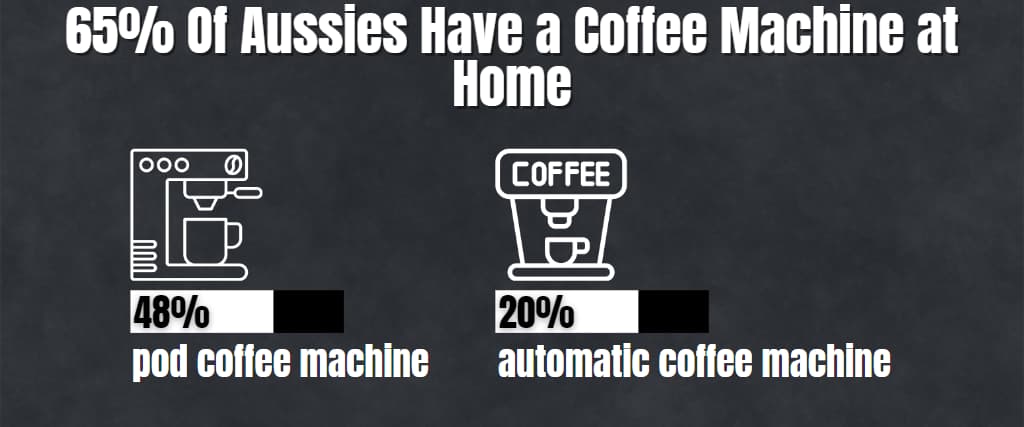
10. 65% Of Aussies Have a Coffee Machine at Home
Approximately 65% of Australians have a coffee machine at home, with 48% owning a pod coffee machine and 20% owning an automatic coffee machine, according to pre-pandemic statistics. However, these numbers are likely to have increased, given the rise in home coffee consumption.
11. Coffee Is a Part of 70.8% Of Working Australians’ Everyday Routines
According to a survey, 70.8% of employed individuals in Australia incorporate coffee into their daily routine, drinking 1-3 cups a day and spending $2 to $5 per cup, which amounts to roughly $1,000 per year on coffee.
12. 23% Of All Coffee Orders Are Takeaways
Approximately 23% of all coffee orders in Australia are for takeaway, making Australia the fourth highest globally in coffee consumed off-premises.
This statistic is based on an estimate by Statista and is preceded by Japan, Canada, and the USA, where more than 40% of coffee sales in coffee shops are consumed off-premises.
13. Coffee Prices Could Go Up to $7 by the End of the Year
Due to various global incidents, including Covid-19 restrictions and frosts in Brazil, coffee prices are expected to increase to $6 or $7 per cup by the end of 2022, compared to the average cost of a coffee cup in Square’s 2019 Coffee Report, which was around $4.
In Australia, chai is the most expensive coffee type, priced at $4.16 per cup, while the most popular coffee beverage, latte, is the cheapest, priced at $3.96 per cup.
14. Darwin Has the Most Expensive Cappuccino Costing
The cost of a regular cappuccino varies in different Australian cities, with Darwin having the highest price of $4.86 per cup, followed by Perth, Hobart, Brisbane, Melbourne, and Adelaide.

15. In Australia, the Coffee Sector Produced $7.7 Billion in Revenue in 2021
In 2021, the coffee industry in Australia generated a revenue of $7.7 billion, which is a 33.9% increase from the previous year, where revenue dropped by 19.5% due to Covid-19 lockdowns, resulting in a revenue of $6.3 billion.
16. Recent COVID Pandemic Travel Bans Reduced the Number of Coffee Shops
The travel restrictions due to Covid-19 have caused a shortage of workers in coffee shops and cafes, with a 76% increase in job ads and a record low in applications in November 2021. The median salary for café workers is $28.21 per hour, making it one of the highest-paid jobs without experience requirements.

17. Australia Had 44,679 Cafés and Restaurants by the End of 2020
By the end of 2020, 44,679 restaurants and cafes were in Australia. However, data from June 2020 shows that most of these establishments (26,969) had an annual turnover between $200,000 and $2 million, with a small percentage having a turnover of over $2 million yearly.
18. Coffee Bean Imports to Australia Reached 1.4 Million 60-Kilogram Bags in 2020
In 2020, coffee bean imports to Australia reached 1.4 million 60-kilogram bags, a decline from 1.61 million bags in 2019. However, ground and roast coffee imports increased by 35,000 60-kilogram bags between 2019 and 2020, reaching 200,000 bags.
19. 600 Tonnes of Coffee Are Produced in Australia
Australia produces only 600t of coffee annually, about 1% of the coffee consumed nationwide. This is also why the country’s coffee exports are low, with only $3.55 million of unroasted coffee, $16.9 million of roasted coffee, and $2.04 million worth of coffee husks and skins exported in 2019.
20. Gloria Jean Is the Leading Coffee Chain in Australia, With 58.7 Million Hot Drinks Sold Annually
Gloria Jean is the leading coffee chain in Australia, selling over 58.7 million hot drinks in 2020. It also has a strong online presence, with over 342,950 followers on Facebook and over 12,000 on Instagram.
21. Starbucks Accumulated $105 Million in Losses and Shut Down 61 Locations Across Australia
Starbucks accumulated $105 million in losses and closed 61 locations across Australia because it did not fit the Australian coffee culture.
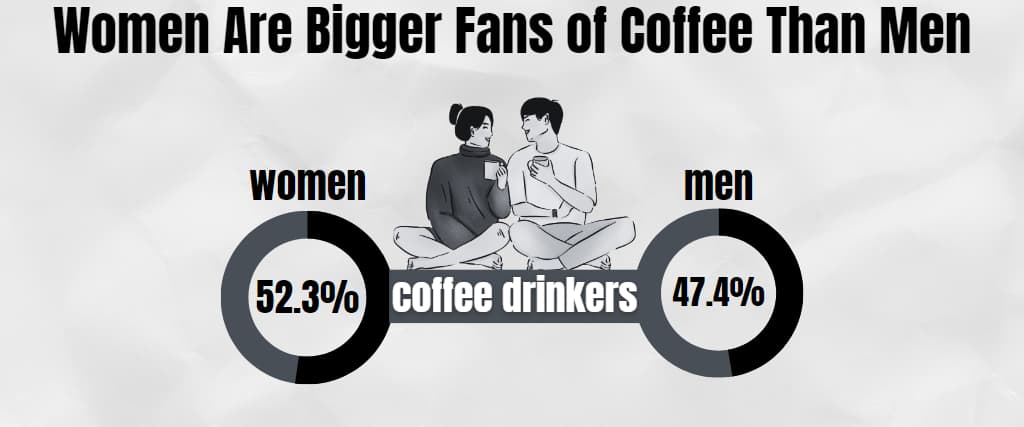
22. Women Are Bigger Fans of Coffee Than Men
Women in Australia are bigger coffee drinkers than men, with 52.3% of women and 47.4% of men consuming coffee. People with lower incomes drink more coffee than those with higher incomes.
23. The Majority of Australians Who Drink Coffee Are Between the Ages of 25 and 34
Australians aged 25 to 34 are the biggest coffee drinkers, with 24.6% of this age group consuming coffee. Other age groups that consume coffee include 21.6% of 55 64-year-olds, 20.4% of 45-54-year-olds, and 23.3% of 35-44-year-olds. Only 10% of 18 to 24-year-olds drink coffee.

24. The Use of Non-dairy Alternatives Is on the Rise
Despite using 97 litres of milk annually per person in Australia, the country has been moving more toward plant-based alternatives. Almond milk (44.2%) is catching up with soy milk (47.2%) as the most preferred type of milk among these.
25. In 2019, Reusable Cups at Coffee Shops Increased
The use of reusable at coffee shops increased by 292%. Queensland has passed a law banning single-use plastics, including food containers, plastic, cups, and polystyrene straws.
26. High Operating Costs Were the Main Barrier to Increasing Environmental Sustainability
High operating costs and tight profit margins are the main barriers to increasing environmental sustainability in the Australian coffee industry, according to a 2021 survey.
27. Australia’s Coffee Market Is Expected to Recover Fully by 2024-25
The coffee market in Australia is expected to fully recover by 2024-25, with revenue projected to grow at an annual rate of 5.5% over the next three years. Some factors expected to drive growth include increased health consciousness, ethical consumerism, fierce market competition, and increased dining-out expenditure.
Despite starting in the 1960s, coffee culture has become a day-to-day activity for many Australians. They love quality coffee and are willing to pay more for sustainable practices. Although increasing coffee prices may affect this, it seems unlikely that Australians will give up their love for caffeine based on consumption statistics.
FAQs:
Is There an Increase in the Consumption of Coffee?
Yes, the consumption of coffee has been increasing steadily between 2017 and 2019, with a slight decrease in 2020. In 2020, Australians consumed 1.96 million sixty-kilogram bags of coffee.
What Is the Coffee Culture Like in Australia?
The coffee culture in Australia is unique and deeply ingrained in the daily routine of many Aussies. In Melbourne, one of the biggest coffee hubs in the country, 95% of all cafes are independently owned.
How Many Cups of Coffee Are Sold Every Day in Australia?
According to Australia’s latest statistics on coffee consumption, 1.3 million cups of coffee are sold daily.